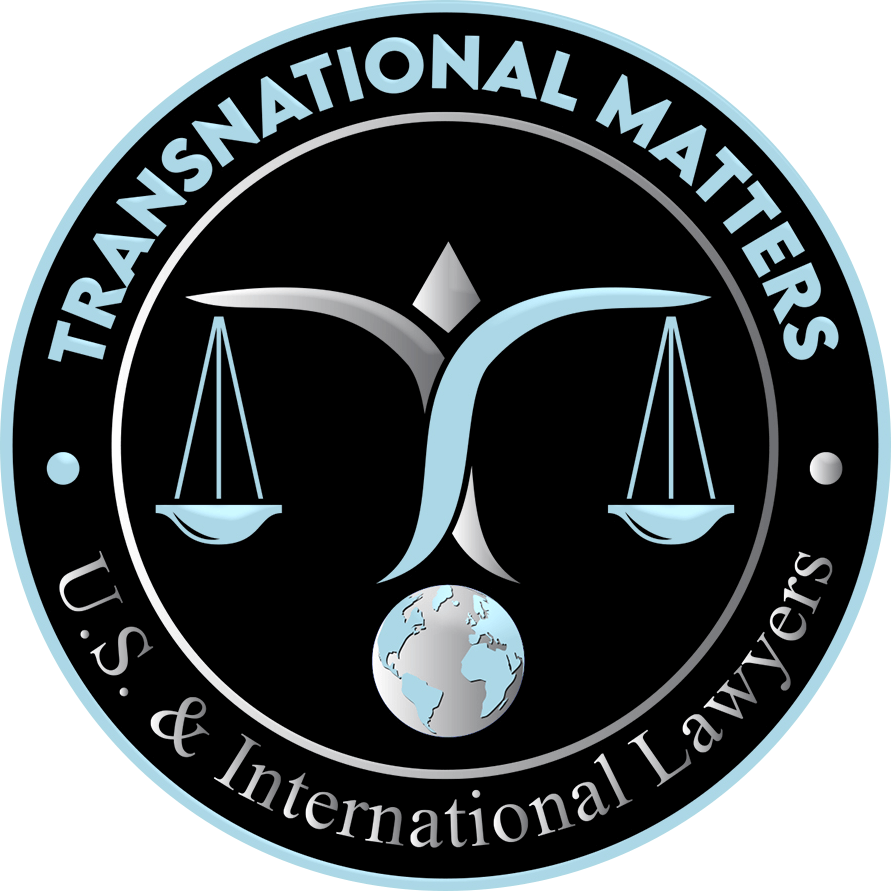In the labyrinth of legal agreements, Purchase Assignation Agreements stand out, particularly for those navigating complex transactions. They are, in essence, the transfer of one party’s contractual rights and obligations to another—an all-important noun in the lexicon of law. This article sheds light on the key components and types of Purchase Assignation Agreements, demystifying the legal jargon often encountered within the documents endorsed by the Federal Court of Justice. It delves into the steps for crafting an ironclad agreement and tackles the prevalent risks and challenges, offering insights into best practices that align with the laws of the United Kingdom and Collective Bargaining standards. By the end of this read, a clear understanding of Purchase Assignation Agreements will not only be within reach but will equip readers with the knowledge to protect their interests in any transaction.
Key Takeaways
- Purchase assignation agreements formalize the transfer of contractual rights and obligations
- Clauses like non-disclosure and contractors license safeguard the interests of all parties
- Legal advice is crucial for compliance and navigating the complexity of these agreements
- Effective negotiation and clear communication are key to successful assignation agreements
- Oversight of legal and regulatory frameworks prevents disputes and ensures transaction integrity
Understanding the Basics of Purchase Assignation Agreements

In delving into the intricacies of purchase assignation agreements, one uncovers a crucial contractual term that enables the transfer of purchase rights and obligations from one party to another. Essential to this framework are the key parties involved: the assignor, the assignee, and, often, the original seller. Whether this process is harnessed by a company in Peru for strategic incentive or by investors in Egypt, the implications are significant. Crucially, the subsequent sections will unravel the definition and purpose of these agreements, outline their fundamental parameters, and highlight the roles of each participant. This understanding offers a foundation for navigating the often complex dynamics of such contracts.
Define Purchase Assignation Agreements and Their Purpose
Purchase assignation agreements serve as formal contracts that stipulate the transfer of rights and responsibilities concerning an asset from an original buyer (assignor) to a third party (assignee). These agreements are often employed in various sectors, such as real estate transactions, where an assignor may be a subcontractor wanting to transfer their contractual position to another. Their purpose is to ensure a clear and legally binding exchange of obligations, offering security to all involved parties against potential uncertainties or fraud.
The utility of purchase assignation agreements extends beyond routine asset transfers, becoming particularly pivotal in structured deals. For instance, within the energy sector, adherence to the energy charter treaty might compel companies to engage in such agreements to secure their investments. The assignor benefits from relinquishing contractual duties, while the assignee gains auction rights or other accrued benefits from the contract:
Identify Key Parties Involved in the Agreement
In the sphere of purchase assignation agreements, key parties stand distinct for their roles and interconnected responsibilities. Ownership rights, once held by the assignor, transition to the assignee, demanding careful negotiation to uphold the integrity of the original real estate contract. This transition hinges not only on legalities but also on the bargaining acumen, where the assignor’s position evolves from an active participant to a facilitator of the agreement.
Within the seamless orchestration of these agreements, especially in sectors like financial services and partnership formations, each party carries distinctive obligations. The assignor must ensure the clean transfer of rights without lingering liabilities, while the assignee accepts the mantle of ownership and the duty to fulfill the contract. The original seller, although not always an active negotiator post-introduction, maintains a vested interest in the satisfactory conclusion of the agreement:
- Assignor: Facilitates the contractual handover, relinquishing ownership rights.
- Assignee: Assumes contractual obligations, gaining control over the property or asset.
- Original Seller: Retains the expectation of contract fulfillment and payment.
Key Elements Found in Purchase Assignation Agreements

Moving forward in understanding purchase assignation agreements, attention turns to their composition. Scrutinizing essential clauses and recognizing common terms and conditions equips stakeholders with the ability to navigate agreements effectively. This section will examine the incorporation of an option or a call option clause, outline the role of a tribunal in dispute resolution, and address the implications of consequential damages. These elements are of particular importance in agreements across Asia, where such contracts govern numerous commercial transactions. Equipped with this knowledge, the reader will comprehend the nuanced legal landscape pertaining to asset transfers and contractual obligations.
Examine Essential Clauses to Consider
When drafting purchase assignation agreements, it is imperative to consider the inclusion of a contractors license clause, especially if the asset involves construction or renovation work. This stipulation ensures that any assigned party holds the necessary qualifications and adheres to the standards set by the Uniform Commercial Code. It safeguards the quality of the work performed and serves as a means of appeal should contractual disputes arise relating to the contractor’s qualifications or performance.
Another fundamental clause to scrutinize in these agreements pertains to leasehold estates, which is essential when the agreement involves the transfer of leased property. It outlines the tenant’s rights and obligations under the new ownership and serves to protect both the lessor and lessee’s interests. Clarity on leasehold terms under the concept of assignment is crucial, as it ensures that both parties are aware of their respective roles and responsibilities, guarding against future legal complications that might otherwise necessitate an appeal.
Recognize Common Terms and Conditions
In the context of purchase assignation agreements, the incorporation of certain terms and conditions acts as a safeguard for all parties. A non-disclosure agreement is a common inclusion, particularly when the contract involves sensitive information or proprietary knowledge. This clause is vital to protect the integrity of the data shared during the transaction, and its significance is observed consistently, from the United States to the Netherlands. Such an agreement ensures that confidential information remains secure, minimizing the risk of a breach that could lead to punitive damages.
Moreover, the policy section within these agreements is critical, outlining the procedures and rules each party agrees to abide by. This can encompass everything from payment schedules to the responsibilities for maintenance and repairs. It is in these detailed stipulations that contractual integrity is fortified, reducing the likelihood of disputes. Failure to adhere to these policies often leads to clear legal repercussions, underscoring the necessity of their inclusion as a preventive measure against potential litigation or financial penalties.
Legal Framework Surrounding Purchase Assignation Agreements

The legal framework encapsulating purchase assignation agreements warrants close inspection due to its role in mitigating uncertainty and ensuring compliance. Applicable laws and regulations, often subject to regional disparities as seen in real estate law reviews in China, underpin the contractual landscape. Furthermore, arbitration emerges as a key dispute resolution mechanism, offering parties a venue to resolve conflicts. The next sections will delve into understanding the legal obligations of all parties involved, outlining both the breadth of legislation that may apply and the distinct duties each party must fulfill. This approach demystifies the legal complexities and underscores the gravity of adhering to regulatory guidelines.
Explore Applicable Laws and Regulations
Examining the legal landscape surrounding purchase assignation agreements necessitates attention to specific laws and regulations that frame these complex transactions. In the realm of engineering project assignments, adherence to guidelines set forth by professional bodies such as the American Law Institute is paramount. These standards intertwine with local competition law to promote fairness and integrity, ensuring each promise within an agreement holds legal weight and is protected from anti-competitive practices.
For agreements governed within the scope of international trade, adherence to provisions outlined in conventions such as the Geneva convention is crucial. This legal grounding not only fosters trust and cooperation across borders but also helps maintain a consistent standard for contractual obligations. The following list showcases foundational aspects of regulations pertinent to purchase assignation agreements:
- Strict compliance with competitive law to prevent unfair market advantages.
- Alignment with international treaties like Geneva conventions to support cross-border transactions.
- Adherence to principles set by authoritative legal bodies, including the American Law Institute.
The coherence of these regulations ensures that every promise is supported by a solid legal framework, reassuring all parties of the contract’s enforceability and legitimacy.
Understand Legal Obligations of All Parties
Each party within a purchase assignation agreement must be fully cognizant of, and act in accordance with, the estoppel doctrine, which precludes individuals from denying facts or rights previously acknowledged. This often intersects with specific clauses within the Code of Federal Regulations that might influence the distribution of profit, risk mitigation through insurance, and parameters for seeking an arbitration award. Understanding these obligations is pivotal, ensuring all parties exercise their due diligence and uphold the intended purpose of the agreement.
For instance, the assignor is tasked with honoring the estoppel certificate, if applicable, confirming the terms and truth of the agreement for the assignee. Meanwhile, the assignee must review and comply with conditions related to insurance upkeep to safeguard the asset against unforeseen damage or loss. Furthermore, in the event of a dispute, familiarity with the Code of Federal Regulations provides a reference for navigating arbitration procedures to secure a fair arbitration award, reinforcing the licit framework within which parties operate and profit is distributed.
Steps to Create a Purchase Assignation Agreement

When crafting a purchase assignation agreement, meticulous preparation is key. The process commences with the gathering of necessary information and documentation, comprising data such as property details, mortgage specifics, and the parties’ identification. Securing professional counsel is equally imperative, ensuring that the agreement conforms to current regulations and protects all parties involved. An increased reliance on technology also necessitates the consideration of electronic signature protocols to facilitate expedited and efficient contract execution.
Gather Necessary Information and Documentation
Initiating the creation of a purchase assignation agreement begins with the meticulous collection of requisite details, which includes a comprehensive rental agreement form, accurate records of trade transactions, and all pertinent financial documents. The procurement of this information is vital and must be approached with diligence and thoroughness, ensuring the authenticity and up-to-date nature of each document. It is through this critical step that the groundwork for a legally-sound contract is laid, highlighting the indisputable value of precision in the early stages of agreement formulation.
Obtaining legal advice from professionals with an understanding of the Model Act and expertise in property-related trade laws is imperative when assembling documentation for a purchase assignation agreement. This guidance assures compliance with current legislation and anticipates complexities surrounding unique assets such as those associated with pipeline operations. Such preemptive consultation mitigates the prospects of future contractual disputes and instills confidence in the strength of the agreement, smoothly navigating the intersection of legality and trade obligations.
Consult Legal Professionals for Guidance
Consultation with legal professionals becomes indispensable, particularly in jurisdictions like Canada, where purchase assignation agreements may touch upon intricacies of both domestic and international commercial arbitration. Soliciting the advice of counsel not only grounds transactional actions in good faith but also secures the necessary surety bonds to safeguard the interests of all stakeholders. The adept handling of these legal aid professionals reflects in the seamless integration of diverse statutes and international norms into the contract.
In scenarios involving cross-border transactions, such as those extending to Greece, the expertise of legal consultants familiar with the nuances of international commercial arbitration provides an invaluable asset. These specialists ensure that agreements comply with the governing laws of all relevant jurisdictions and that each signatory upholds the principle of good faith throughout the agreement’s lifecycle. Their involvement is instrumental in constructing a firm legal foundation for the assignation agreement, offering assurance against future disputes.
Risks and Challenges in Purchase Assignation Agreements

Understanding the potential legal pitfalls and learning ways to mitigate contractual risks are fundamental aspects of navigating purchase assignation agreements. Parties involved must remain vigilant about implications related to the American Arbitration Association, the United Nations Convention on Contracts for the International Sale of Goods, liabilities, and tax concerns. Grasping these concepts is critical to preventing future disputes and ensuring the agreement remains advantageous for all entities. This section will provide actionable insights to avoid common missteps and bolster contractual soundness.
Identify Potential Legal Pitfalls to Avoid
Ensuring proper acceptance of the terms within purchase assignation agreements is pivotal, particularly when dealing with international law and foreign direct investment. One legal pitfall to avoid is the failure to align the agreement with the regulatory demands of all jurisdictions involved. For instance, a company in Argentina must navigate both local and international guidelines to protect its investment, requiring meticulous attention to legal compliance to stave off disputes and financial setbacks.
Those engaging in purchase assignation agreements must also be aware of nuances within various organizational regulations. Neglect often leads to overlooking conditions that could later nullify an agreement or impose severe penalties. This is especially relevant when the assignation pertains to assets in countries with intricate legal frameworks governing foreign direct investment, where a thorough understanding of local practices and international norms is crucial to ensure the transaction’s success and legality.
Learn Ways to Mitigate Contractual Risks
To mitigate contractual risks in purchase assignation agreements, parties may seek the security of an injunction to prevent any breaches that could result in significant losses. Effectively utilizing the UNCITRAL Model Law on International Commercial Arbitration can also be crucial for resolving disputes in a manner that is acknowledged across jurisdictions. This legal safety net is paramount when transfer of ownership might affect ongoing commitments such as loans, necessitating transparent dialogue and thorough contractual provisions to ensure that trust is maintained between the parties and their respective financial institutions.
Strategic inclusion of a non-compete agreement within the purchase assignation contract serves as a preventive measure against future competitive conflicts and preserves the value of the acquired asset. It is also advisable for parties to carefully align their interests, especially in loan agreements connected to the property or business being transferred. By establishing specific terms of engagement endorsed by all entities, trust can be fostered, reducing the chance of litigation and positioning the assignee to fulfill obligations seamlessly while respecting existing commitments.
Best Practices for Effective Purchase Assignation Agreements

To construct robust purchase assignation agreements, parties must adopt successful negotiation strategies and ensure lucid communication is established. Delving into effective negotiation techniques can prevent issues of unconscionability that may arise during asset transfers. Simultaneously, crystal-clear dialogue between stakeholders underpins the agreement’s success, particularly when it pertains to clarifying an insurance policy or interpreting copyright and finance clauses. A partnership with Wolters Kluwer could offer access to a wealth of resources, helping to inform and streamline the drafting process. These foundational strategies form the nexus of creating agreements that safeguard interests and prevent disputes.
Employ Successful Negotiation Strategies
Effective negotiation strategies are central to crafting advantageous purchase assignation agreements, especially in bustling markets such as Hong Kong where the stakes are high. The focus must be on thoroughly dissecting indirect costs and potential damages associated with assets, particularly in complex sectors like liquefied natural gas. By accurately forecasting these expenses and liabilities, parties can avoid expensive oversights and ensure that the terms of the agreement are precise and mutually beneficial.
It’s imperative to approach negotiations with a detailed understanding of all associated risks, including those related to indirect costs and unforeseen damages. Parties engaging in Hong Kong’s dynamic market, for instance, would do well to employ these strategies:
- Conduct extensive due diligence to account for all possible indirect costs.
- Negotiate clauses that clearly delineate responsibilities for damages.
- Include explicit terms regarding the transfer of assets within the liquefied natural gas sector.
These steps not only reinforce the efficacy of the negotiation process but also ensure the agreement aligns with the sophisticated requirements of high-value investments.
Ensure Clear Communication Between Parties
Clear communication is pivotal in minimizing risk and ensuring a seamless “marriage” of interests in purchase assignation agreements. Especially in nations such as Brazil, where the complexity of business transactions can be heightened by local nuances, it is essential that parties share vital information effectively. This transparency allows for the detection and resolution of potential misunderstandings promptly, laying a foundation of trust and cooperation.
In the realm of purchase assignation agreements, the clarity of discourse between the assignor and assignee is not merely beneficial but integral to the contract‘s success. To this end, each party must articulate expectations and concerns with precision, thereby safeguarding against costly misunderstandings. Thorough documentation of these communications, specifically concerning risks and terms, mitigates ambiguity and serves as a valuable reference throughout the agreement’s term.
Conclusion
Purchase assignation agreements are integral for the transparent and secure transfer of rights and obligations in asset transactions, calling for rigorous attention to detail and legal veracity. The agreements hinge on the clear delineation of responsibilities among all parties, underpinned by a thorough understanding of the applicable legal frameworks and potential risks. Effective negotiation and communication are paramount in drafting agreements that not only protect stakeholder interests but also mitigate future disputes. As such, these agreements stand as a cornerstone of commercial integrity, ensuring that transactions proceed with trust and legal certainty.


